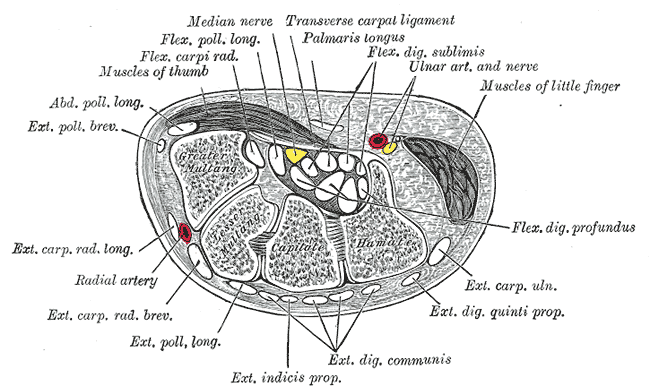Carpal tunnel syndrome overview
|
Carpal tunnel syndrome Microchapters |
|
Diagnosis |
|---|
|
Treatment |
|
Case Studies |
|
Carpal tunnel syndrome overview On the Web |
|
American Roentgen Ray Society Images of Carpal tunnel syndrome overview |
|
Risk calculators and risk factors for Carpal tunnel syndrome overview |
Editor-In-Chief: C. Michael Gibson, M.S., M.D. [1] Associate Editor(s)-in-Chief: Mohammadmain Rezazadehsaatlou [2]

Carpal tunnel syndrome (CTS) or Median Neuropathy at the Wrist is a medical condition in which the median nerve is compressed at the wrist, leading to pain, paresthesias, and muscle weakness in the forearm and hand.[1] A form of compressive neuropathy, CTS is more common in women than it is in men, and, though it can occur at any age, has a peak incidence around age 42.[2] The lifetime risk for CTS is around 10% of the adult population.[3]. Most cases of CTS are idiopathic, without known cause. Repetitive activities are often blamed for the development of CTS, along with several other possible causes. However, the correlation is often unclear. It is a multi-faceted problem and can therefore be challenging to treat. Still, there is a multitude of possible treatments, e.g. treating any possible underlying disease or condition, immobilizing braces, physiotherapy, medication, prioritizing hand activities and ergonomics. Ultimately, carpal tunnel release surgery may be required. Outcomes are generally good. The condition was first noted in the medical literature in the early 1900s.